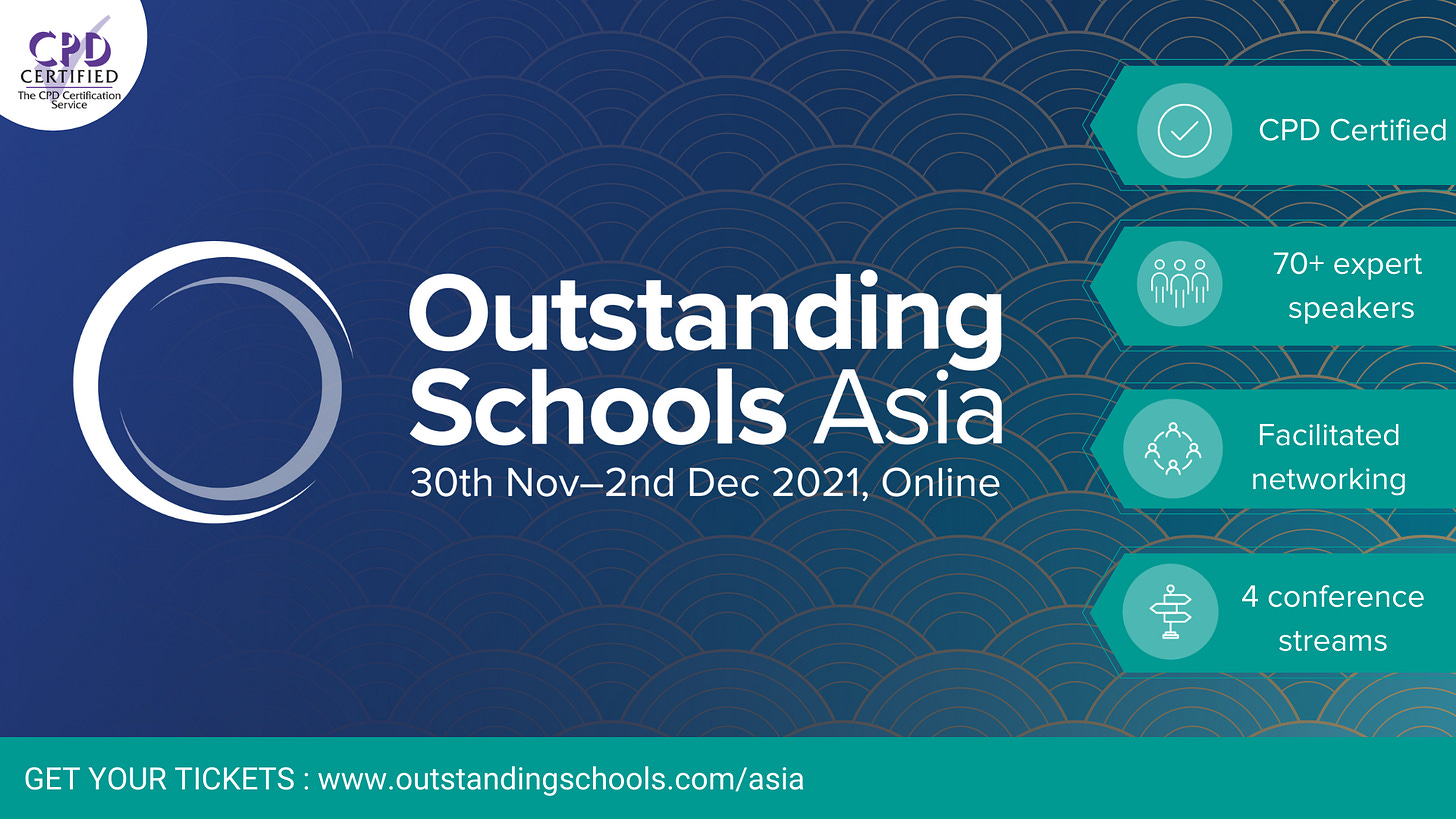In this deep dive, Dr Ian Kelleher, a speaker at the Outstanding Schools Asia Conference and co-author of Neuroteach and The Dreyfuss Chair of Research at the Centre for Transformative Teaching and Learning, shares key advice and guidance on how school leaders and teachers can translate the science of learning into everyday practices in their own classrooms.
Audio narrated by Jason Lasky (jlaskyvoices.com)
What makes the greatest difference to how a student will do at school?
One factor has remained at or near the top of John Hattie’s ranking lists since he started making them – teacher collective efficacy.
With a truly massive effect size of 1.57, collective teacher efficacy is the shared belief of the faculty in a school that they have the capability to positively impact their students’ outcomes. If we want to do the best for our students, we need to address teacher collective efficacy.
But we must ground teacher collective efficacy in the science of learning.
Teacher collective efficacy is more complicated that just believing you can do it. Picture a gaggle of 18th century doctors, sitting in the tea room at their hospital, talking about their day, and sharing stories of the marvellous virtues of leech therapy and trepanation – drilling holes in a patient’s head to let out the bad vapours.
The collective efficacy of this group? Probably very high.
They truly share a belief that they have, in their hands, the best tools possible to help others. But the next time you have a sudden pain in your chest, would you go to them just because they have a high collective efficacy? Or would you prefer to go to a doctor whose practices are based on evidence generated from a large number of research studies?
Collective teacher efficacy is powerful, but unless it is based on practices informed by a solid research base we have the education equivalent of leeches and trepanation.
A research base to inform everyday practices in classrooms and schools exists, and has done for decades, but it rarely makes its way into schools.
I would like to argue that we need a multi-pronged approach that:
(1) builds teacher collective efficacy by…
(2) …providing educators and school leaders with a common language and framework of strategies based on how the brain learns best.
Collective efficacy alone is not the answer.
Collective efficacy based on the Science of Teaching and Learning is. This is our mission at the Center for Transformative Teaching and Learning – helping teachers, schools, and school districts bring the science of learning to life in their classrooms and schools.
So, what should be in this research-informed toolkit?
Here are some suggestions to get you started.
Aid memory
Spaced practice and retrieval practice are more effective than study methods students typically choose like rereading notes and highlighting.
But students, who are still novice learners, often find it hard to figure out how to do these in your class on their own. So build spaced practice and retrieval practice regularly into in-class and homework assignments.
Acknowledge limited working memory and cognitive load
Our working memory holds fewer items for less time than you think. This means that if the cognitive load we place on students is too high, learning can be hard or impossible.
To help with this, reduce clutter and distractions in your classroom, simplify and number instructions, minimise classroom threats, break longer assignments into smaller chunks, and provide temporary scaffolds that can be peeled away from a student as their proficiency increases.
Teach and assess in multiple modalities
Learning is improved for all students if material is presented in multiple modalities. Visual is like bacon – it often makes things better, but not always. Choose modalities based on what works best for the topic/content you want to teach. DO NOT try to match perceived “learning styles” of your students.
Embed formative assessment
It is hard to accurately know what students already know and what they are still grappling with, so make diagnostic formative assessments a regular part of your teaching. These should be low- or no-stakes. Use what you find to adjust your daily lesson plans and the practice assignments you set.
Understand the link between emotion and cognition
Research from cognitive science tells us that emotion and cognition are related in the brain.
Sources of negative emotion, such as stereotype threat and not feeling like you belong, should be minimised as they create barriers to learning. Deliberately use positive emotion, like humor, empathy and joy, to build engagement, motivation, and learning.
Give feedback that works
Unless students get a chance to act on the feedback you give them, all that effort you put in is likely wasted. So when you return work with feedback on it, build ten minutes into class to:
(1) for you to manage the emotional climate when students receive the feedback;
(2) for students to understand and begin doing something with the feedback they get.
This list is not exhaustive, but gives you a good place to start your Science of Teaching and Learning journey.
These are promising principles that":
(1) are robustly supported by research;
(2) are quite straightforward to translate into everyday practices in your class or school; and
(3) are likely to have an impact that is worth the investment of effort.
It is important to note that research journals do not provide next-day solutions for teachers. Rather, they give us what David Daniel (2012) calls promising principles.
For example, spaced practice, retrieval practice, formative assessment, and belonging interventions are promising principles. But what do these look like exactly at 10:30am this coming Tuesday in your Mathematics class?
There is an important step that only a teacher can do – translation. Taking the promising principle and making it work in your context: your subject, your school, your community, your children, and your personal voice as a teacher. I know I need to do a formative assessment tomorrow, but what will it look like? There is a test coming up next week, so I will embed some retrieval practice, both for homework and in class – but how do I do it for this topic in a way that will engage my students to think hard?
This is where collective efficacy is built: teachers working with the same high-quality research-informed toolkit to address needs and strategic opportunities that are unique to their class, but which share common features.
Imagine a history teacher and a biology teacher working together on how to embed memorizing strategies into their classes, or 6th through 12th grade math teachers talking about how to use formative assessment in a progression of age appropriate ways in their classes. We build efficacious collective efficacy over time with moments like this.
It is a journey, and we can help you on this journey.
Let me leave you with a simple next step. Do you want to see how well you know the science of learning? Take our free diagnostic – it will only take five minutes – and you’ll receive a report within hours. Or sign up to have your whole school or district take it.
I wish you the best of luck on your research-informed teaching journey!
WANT MORE?
If you would like to learn more about how to put the science of teaching and learning into your class, school or district, and build collective teacher efficacy by doing so, please get in touch: ikelleher@saes.org, LinkedIn, Twitter.
Jason Lasky
The audio version of this article is supplied by Jason Lasky. Jason provides sound solutions for your voice over needs. He can be contacted via: jlaskyvoices.com
OUTSTANDING SCHOOLS ASIA Conference
Join Dr Ian Kelleher at the Outstanding Schools Asia Conference to hear from Dr Ian Kelleher and many others including Professor Dylan Wiliam, Professor Rob Coe and Dr Helen Street.
Thank you for reading. EDDi: Educational Digest International grows through word of mouth. Please consider sharing this post with someone who might appreciate it.












